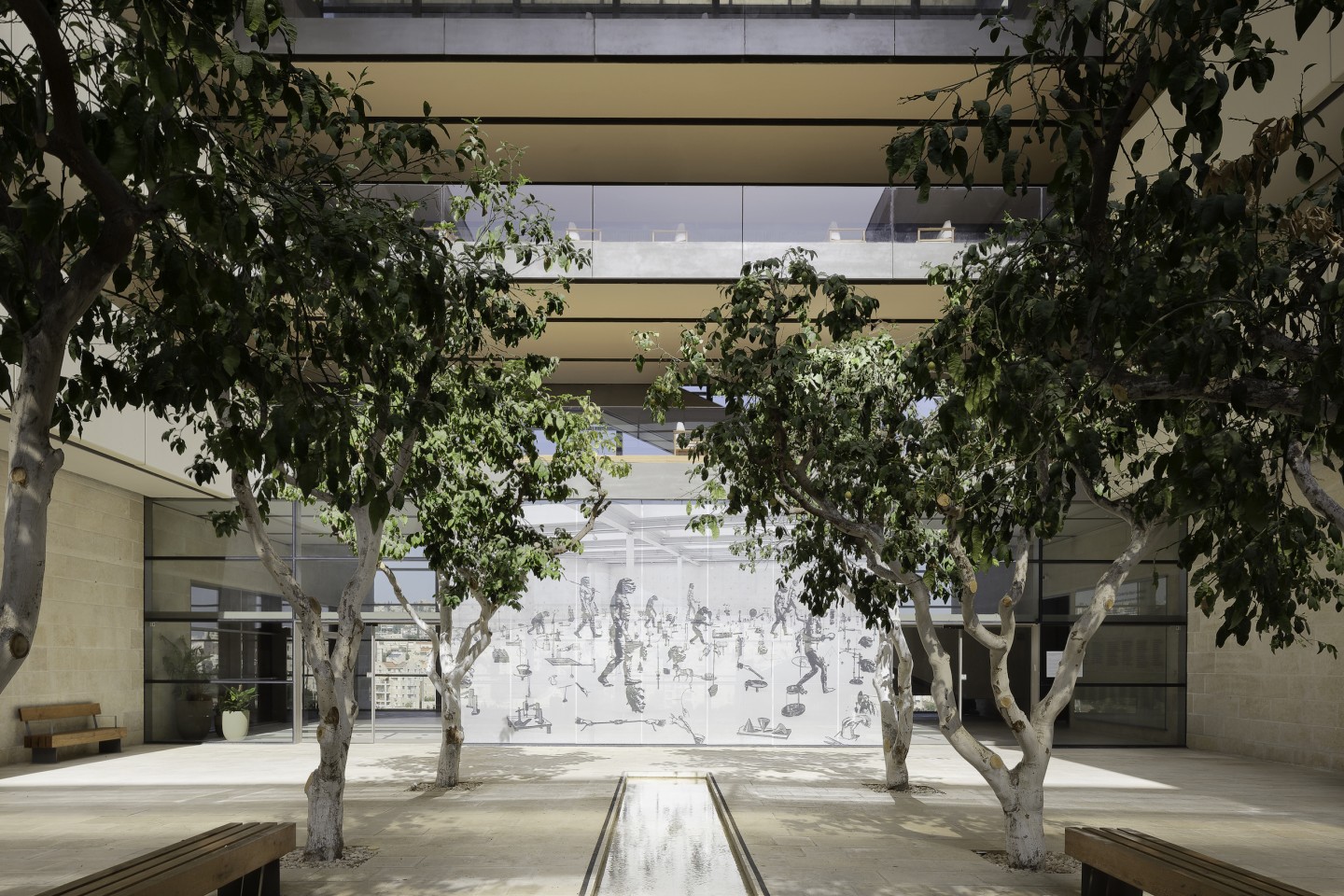The Edmond and Lily Safra Center for Brain Sciences in Jerusalem is described by designer Foster + Partners as “inspired by science.” It’s defined by an eye-catching laser-cut exterior that helps shade the interior while also paying homage to a pioneer of modern neuroscience.
The building measures 5,130 sq m (roughly 55,000 sq ft) and is situated at the heart of the Hebrew University of Jerusalem.
Because the structure’s upper three levels are glazed, Foster + Partners added an intricate shading screen made up of 290 unique cast-aluminum panels to the exterior. The panels have been precision-cut with lasers to depict early 20th Century drawings by influential Spanish neuroscientist Santiago Ramón y Cajal – often called the father of modern neuroscience – illustrating the structure of the brain.
Further passive cooling is provided by translucent canopies situated to the west and east, which also serve as visual markers for the main entrances, while the building’s orientation is designed to reduce heat gain. Additionally, rainwater is collected and used for irrigation, plus local materials were used during construction.

Studio Harel Gilboa
The building’s interior is laid out with some thought to energy efficiency, too. Its floorplan takes the form of two parallel wings arranged around a tree-filled central courtyard – the latter has an operable roof that allows it to be covered in winter to reduce heating loads, and uncovered in summer to promote natural ventilation.
The lower floors of the building include teaching facilities, a 200-seat auditorium, a library, café and a publicly accessible gallery for the display of art related to the brain, plus there are social areas. The upper levels, meanwhile, host a total of 28 flexible laboratories linked by social hubs, to encourage the exchange of ideas between students and staff.
“Understanding the enigma of the brain is the most challenging endeavor of the 21st century and research in this area is vital to the quality of life for millions of people,” says Spencer de Grey, Head of Design, Foster + Partners. “This is one of the most innovative projects of its kind at an Israeli university, with several laboratory complexes that are highly flexible to anticipate and accommodate future change.”
Source: Foster + Partners
Source of Article